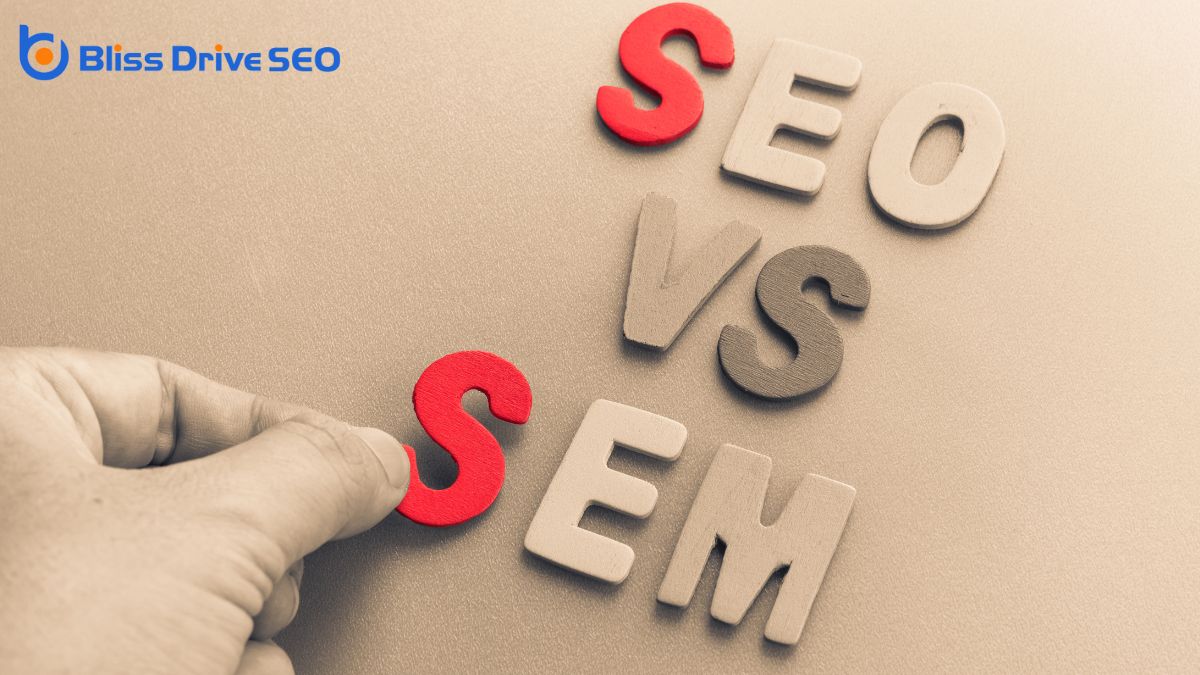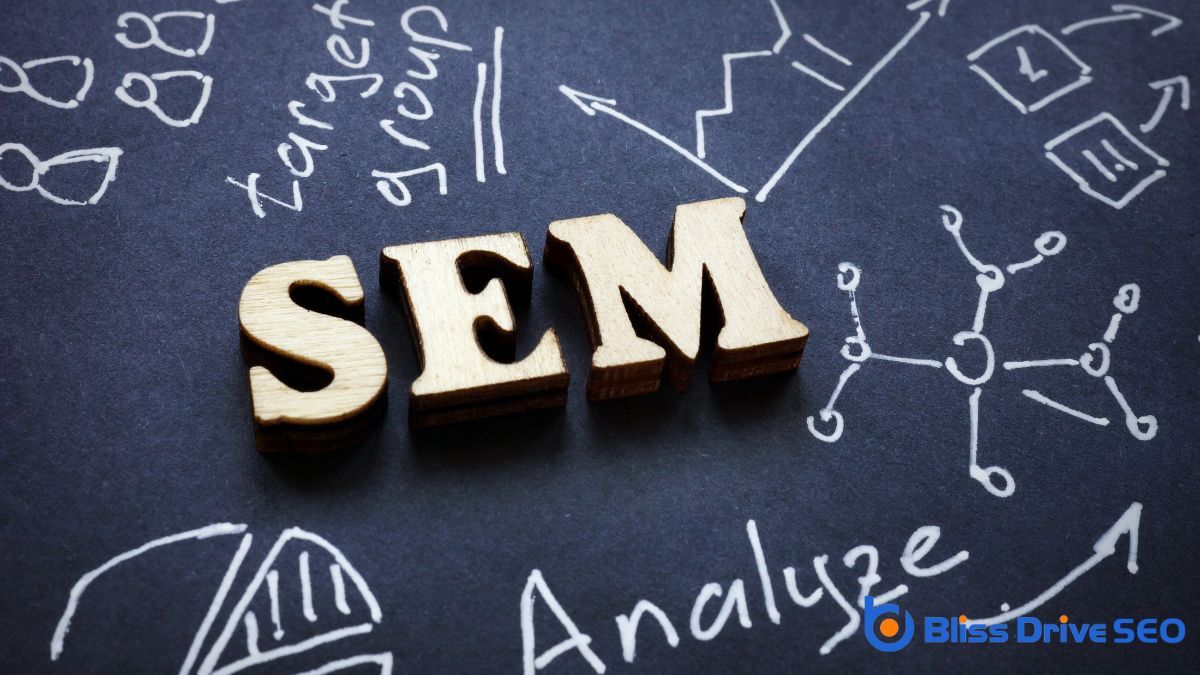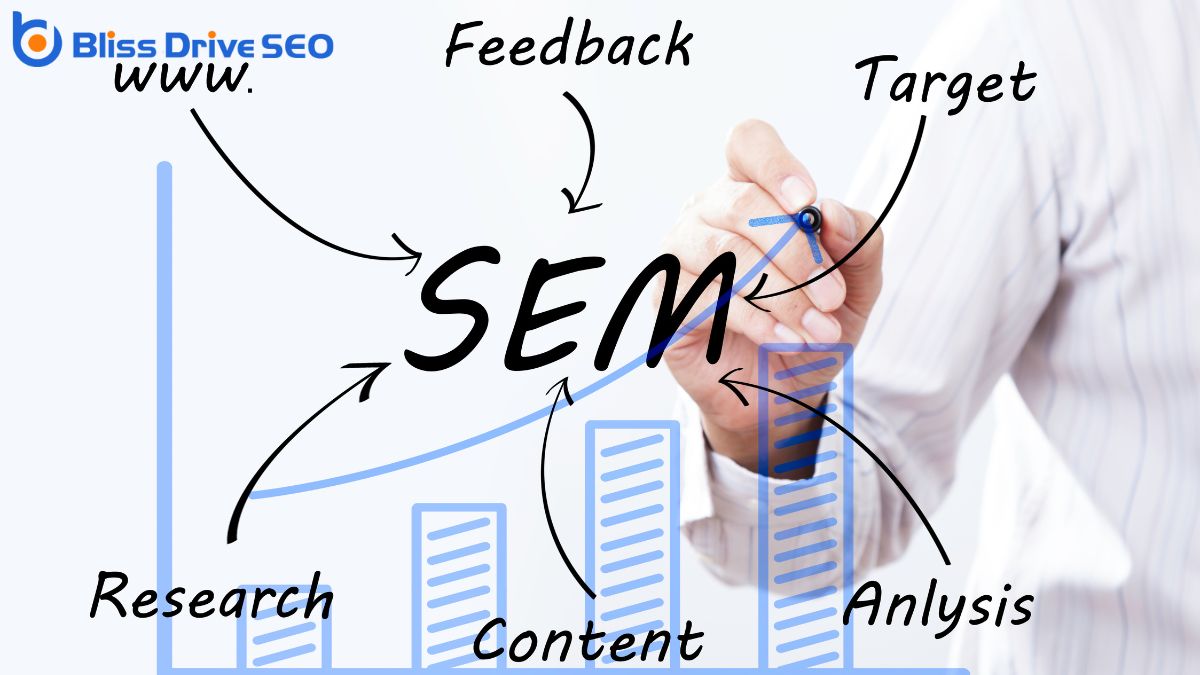Learn More About Us

When you're distinguishing between SEO and SEM, remember that SEO revolves around optimizing your website to rank organically in search results. This involves using relevant keywordsWords or phrases that users type into search engines to find information. and creating quality content. On the other hand, SEM uses paid strategies like PPC advertising to gain immediate search engine visibility. While SEO builds authority and trust over time with minimal costs, SEM offers quick results and customer reach but requires financial investment. Combining both can balance immediate gains with long-term benefits. By understanding their distinct roles, you can decide which approach aligns better with your business goals and industry landscape.
To grasp the basics of SEO, it's essential to understand that this practice involves optimizing your website to rank higher in search engine results. Search engines like Google use algorithms to determine which sites are most relevant to a user's query. By optimizing your site, you enhance its visibility, making it more likely to appear on the first page of search results. This isn't just about stuffing keywords; it's about creating valuable content, improving site speed, and ensuring mobile-friendliness.
You need to focus on both on-page and off-page SEOOptimization actions taken outside the website, primarily involving backlinks and social media..
On-page SEOOptimization techniques performed directly on the website, including content and HTML source code. involves optimizing individual pages on your site, such as using relevant keywords, writing compelling meta descriptions, and ensuring your content is clear and well-structured.
Off-page SEO refers to actions taken outside your site to impact its rankingsThe position at which a website appears in the SERP., like building high-quality backlinksLinks from other websites pointing to your website, crucial for SEO. that signal your site's authority.
Monitoring your site's performance is also vital. Tools like Google AnalyticsA web analytics service offered by Google that tracks and reports website traffic. help you track metrics such as organic trafficVisitors who come to a website through unpaid search engine results. and bounce rates, offering insight into what's working and what's not. By understanding these basics, you'll set a solid foundation for a successful SEO strategy.

In exploring SEM elements, you'll focus on crafting effective paid advertising strategies to boost your visibility.
Use precise keyword targeting techniques to guarantee your ads reach the right audience.
When diving into paid advertising strategies within SEM, you'll find various methods that can enhance your online visibility quickly. These strategies allow you to reach potential customers more effectively by placing your ads in front of the right audience. By understanding these options, you can make smarter decisions to boost your marketing efforts.
Here are a few popular paid advertising strategies you should consider:
Keyword targeting techniques are at the heart of a successful SEM strategy. You need to understand how to choose and use keywords that align with your advertising goals. Start by researching keywords that potential customers might use when searching for products or services like yours. Tools like Google Keyword Planner can help you identify high-volume and relevant keywords.
Once you've got your list, prioritize them based on their relevance and competitiveness. Long-tail keywordsLonger, more specific keyword phrases that are less competitive and often more targeted., which are longer and more specific phrases, often have less competition and can attract more targeted traffic. By focusing on these, you can improve your chances of reaching users who are closer to making a purchase.
Next, group your keywords into themes or categories. This helps you create more focused ad groups and tailor your ad copyThe text or content of an advertisement. to better match search intentThe purpose behind a user’s search query..
Don't forget to use negative keywordsKeywords that prevent ads from being shown for certain search queries., too. These are terms you want to exclude to prevent your ads from showing up in irrelevant searches, saving you money and improving your click-through rate.
Understanding ad performance metricsKey indicators used to measure the effectiveness of affiliate marketing efforts, such as clicks, con... is crucial for fine-tuning your SEM campaigns. When you delve into these metrics, you gain insights into what's effective and what's not, allowing you to make informed decisions that optimize your advertising strategy. By focusing on key performance indicators (KPIs), you can adjust your campaigns for improved results and a higher return on investment (ROI)A measure of the profitability of an investment, calculated by dividing the net profit by the cost o....
Here are four crucial ad performance metrics to keep an eye on:
Exploring the world of digital marketing can often feel like deciphering a complex puzzle. Understanding the key differences between SEO (Search Engine Optimization)The process of improving the visibility of a website on search engines via organic search results. and SEM (Search Engine Marketing) is essential. Both aim to increase your visibility on search engines, but they approach this goal differently.
SEO focuses on organic search results. You enhance your website through keyword optimization, quality content, and improved user experience, which helps search engines rank you higher naturally. This process takes time and patience, but it can yield long-term benefits without ongoing costs for clicks.
On the other hand, SEM involves paid strategies, often referred to as PPC (Pay-Per-Click)An online advertising model where advertisers pay a fee each time their ad is clicked.. You bid on specific keywords to display your ads in search results. This approach provides immediate visibility and can be highly effective if you've got a budget to support ongoing campaigns.
While SEO builds a foundation of trust and authority over time, SEM offers quicker results through paid placements. You might find SEM useful for short-term campaigns or when you need immediate traffic. Balancing both can be strategic, allowing you to reap the benefits of organic growth while capitalizing on timely opportunities through paid efforts.
With SEO, you're not just optimizing for search engines but also enhancing user experience. By focusing on quality content and easy navigation, you create a more pleasant journey for visitors. This approach can leadA potential customer referred by an affiliate who has shown interest in the product or service but h... to higher engagement and more meaningful interactions with your site. SEO isn't about tricking search engines; it's about building a website that naturally attracts and retains users.
The benefits of SEO extend beyond just attracting traffic. Here's what you stand to gain:
While SEO focuses on organic growth, SEM, or Search Engine Marketing, offers a more immediate approach to gaining visibility. When you use SEM, you're investing in paid advertising to appear at the top of search results almost instantly. This means you can reach potential customers faster than waiting for organic rankings to improve.
If you're launching a new product or service, SEM can quickly generate traffic and awareness in a competitive market.
Another advantage of SEM is its controllability. You can set specific budgets, target particular demographics, and adjust your campaigns based on performance data. This flexibility lets you experiment and find what works best for your business without long-term commitments.
You're also able to measure results accurately, thanks to detailed analyticsThe systematic computational analysis of data or statistics to gain insights and support decision-ma.... These insights allow you to refine your strategy, ensuring you're getting the most out of your investment.
Additionally, SEM enhances brand recognitionThe ability of consumers to identify a brand by its attributes, such as logo, color, or packaging.. Even if users don't click on your ads, seeing your brand at the top of search results boosts credibility and keeps your business top-of-mind.

Deciding on the right strategy between SEO and SEM largely depends on your business goals and resources. If you're aiming for long-term growth and have patience, SEO might be your best bet. It focuses on organic search results, which can build trust and credibility over time.
On the other hand, if you're looking for quick visibility and have a budget to spend, SEM can provide immediate results through paid advertising.
Consider these factors when choosing your strategy:
When deciding between SEO and SEM, consider your goals and resources. SEO is great for long-term growth and building organic traffic, while SEM offers quick visibility through paid ads. Both have unique benefits, so think about your budget, timeline, and desired outcomes. If you want sustainable traffic, focus on SEO. If immediate results matter, SEM might be the way to go. Ultimately, choose the strategy that aligns best with your business objectives and market conditions.
